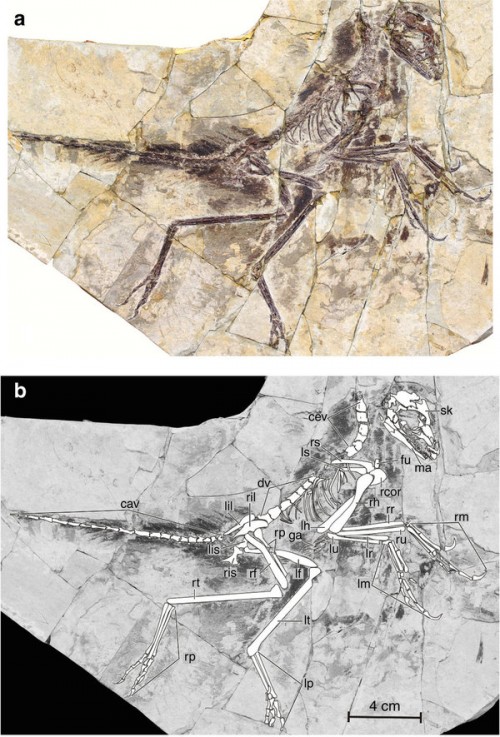Researchers have identified a mutation in a gene that confers several distinct traits to East Asians, including thicker hair.
The traits — thicker hair shafts, more sweat glands, characteristically identified teeth and smaller breasts — are the result of a gene mutation that occurred about 35,000 years ago, the researchers have concluded.
The discovery explains a crucial juncture in the evolution of East Asians. But the method can also be applied to some 400 other sites on the human genome. The DNA changes at these sites, researchers believe, mark the turning points in recent human evolution as the populations on each continent diverged from one another.
The first of those sites to be studied contains the gene known as EDAR. Africans and Europeans carry the standard version of the gene, but in most East Asians, one of the DNA units has mutated.
Seeking to understand if the gene was the cause of thicker hair in East Asians with the variant gene, a team of researchers led by Yana G. Kamberov and Pardis C. Sabeti at the
Broad Institute in Cambridge, Mass., decided to test the gene in mice, where its effects could be more easily explored.
Mice already have EDAR, an ancient mammalian gene that plays a leading role in the embryo in shaping hair, skin and teeth. The Broad team engineered a strain of mice whose EDAR gene had the same DNA change as the East Asian version of EDAR.
When the mice grew up, the researchers found they did indeed have thicker hair shafts, confirming that the changed gene was the cause of East Asians’ thicker hair. But the gene had several other effects,
they report in Thursday’s issue of the journal Cell.
One was that the mice, to the researchers’ surprise, had extra sweat glands. A Chinese member of the team, Sijia Wang, then tested people in China and discovered that they, too, had more numerous sweat glands, evidently another effect of the gene.
Another surprise was that the engineered mice had less breast tissue, meaning that EDAR could be the reason that East Asian women have generally smaller breasts.
East Asians have distinctively shaped teeth for which their version of EDAR is probably responsible. But the mice were less helpful on this point; their teeth are so different from humans’ that the researchers could not see any specific change.
The finding that the gene has so many effects raises the question of which one was the dominant trigger for natural selection.
Dr. Sabeti said the extra sweat glands could have been the feature favored by natural selection, with all the other effects being dragged along in its train.
“We’re the only mammals to have changed their entire hair pattern. So the changes in teeth, hair and breasts — it’s very possible they are the passengers and thermoregulation is the key,” she said, referring to the role of sweat glands in cooling the body.
East Asians are sometimes assumed to have evolved in a cold environment because of their narrow nostrils, which conserve heat, and the extra eyelid fat that insulates the eye. But the Broad team calculates that the EDAR variant arose about 35,000 years ago in central China and that the region was then quite warm and humid. Extra sweat glands would have been advantageous to the hunter-gatherers who lived at that time.
But
Joshua Akey, a geneticist at the University of Washington in Seattle, said he thought the more likely cause of the gene’s spread among East Asians was sexual selection. Thick hair and small breasts are visible sexual signals which, if preferred by men, could quickly become more common as the carriers had more children. The genes underlying conspicuous traits, like blue eyes and blond hair in Europeans, have very strong signals of selection, Dr. Akey said, and the sexually visible effects of EDAR are likely to have been stronger drivers of natural selection than sweat glands.
Yet a third view is held by Dr. Kamberov, who believes that each of the effects of the EDAR variant may have been favored by natural selection at a different time. A series of selections on different traits thus made the variant version so common among East Asians. About 93 percent of Han Chinese carry the variant, as do about 70 percent of people in Japan and Thailand, and 60 to 90 percent of American Indians, a population descended from East Asians.
The Broad team is studying EDAR as part of a larger plan to identify all the genetic variants responsible for recent human evolution. Many researchers, including Dr. Sabeti, have devised ways of scanning the human genome to detect the fingerprints of natural selection. But these scans have typically identified large chunks of the genome that contain many genes. There is often no way to tell which gene was the target of natural selection.
A team led by Dr. Sabeti and Sharon R. Grossman of the Broad Institute has now refined the usual scanning methods and identified 412 sites on the genome that have been under selection. Each site is small enough that it contains at most a single gene.
Each race has a different set of selected regions, reflecting the fact that the human population had dispersed from its African homeland and faced different challenges that led to genetic adaptation on each continent. About 140 of the sites affected by natural selection are in Europeans, 140 in East Asians and 132 in Africans, the authors report in
another article published Thursday in Cell.
Inserting some of the other selected genes into mice might help explain why they were favored, and point to critical turning points in recent human evolution, Dr. Sabeti said.
In the case of EDAR, putting the gene into mice has only magnified the mystery of why it was selected. But the researchers are not discouraged. “A reflection of good science is that a step forward opens up a lot more questions,” Dr. Akey said.

